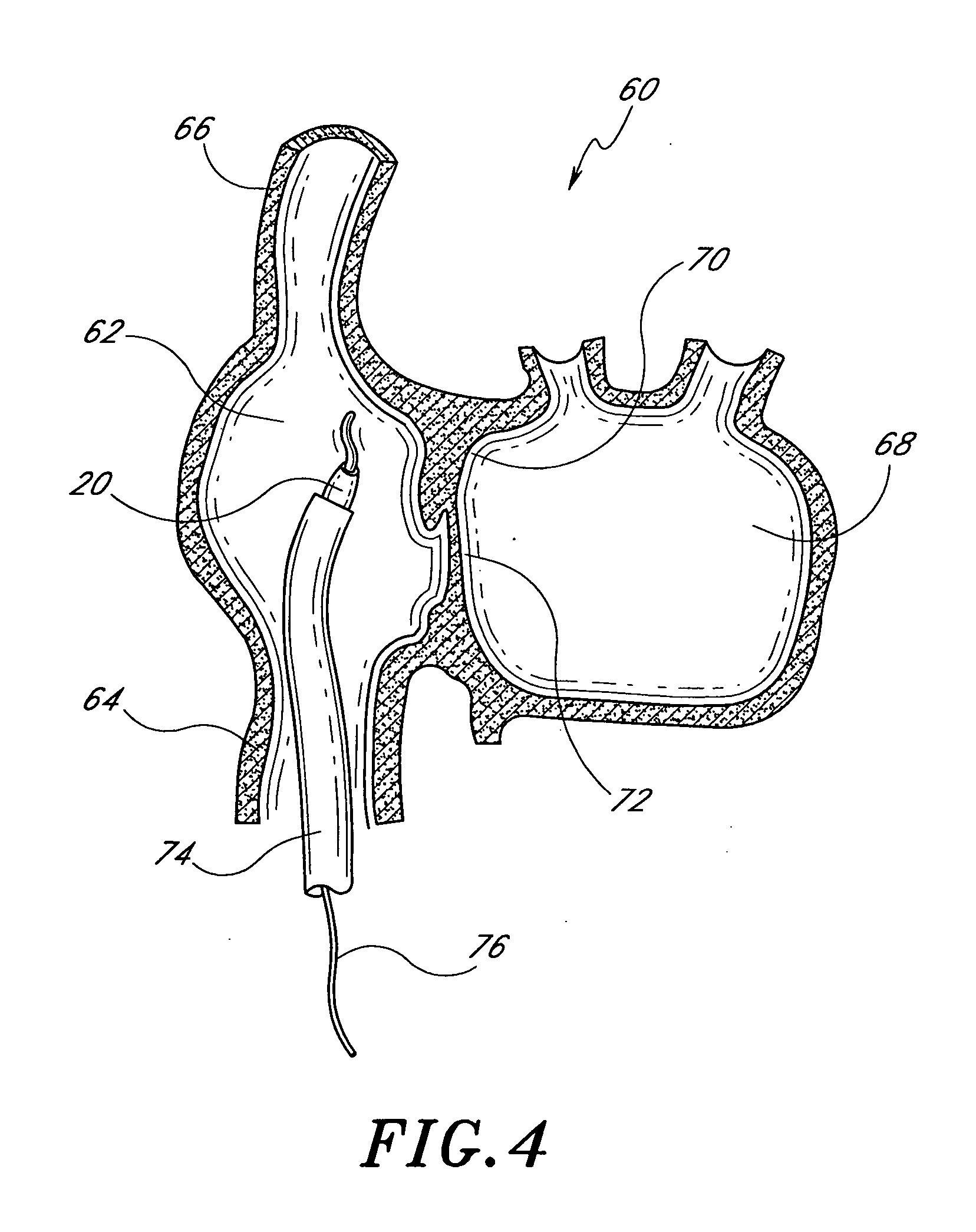Method and apparatus for accessing the left atrial appendage
a technology of appendage and left atrial, which is applied in the field of transseptal access systems, can solve the problems of difficult access to the left atrium through the pulmonary artery, difficult access to the left atrium with a catheter, and difficulty in reaching the left ventricl
- Summary
- Abstract
- Description
- Claims
- Application Information
AI Technical Summary
Benefits of technology
Problems solved by technology
Method used
Image
Examples
Embodiment Construction
[0035] Referring to FIG. 1, there is disclosed a dilator 20 in accordance with the present invention. Dilator 20 has a proximal end 22, a distal end 24 and an elongate flexible tubular body 26. The overall length of the dilator 20 depends upon the percutaneous access point and the desired application. For example, lengths in the area of from about 80 cm to about 100 cm are typical for use in percutaneous transluminal access at the femoral vein for locating and puncturing a site on the atrial septum in the heart.
[0036] Tubular body 26 may be manufactured in accordance with any of a variety of known techniques, for manufacturing catheters adapted to reach the coronary arteries or chambers of the heart. For example, tubular body 26 may be manufactured as an extrusion of appropriate biocompatible polymeric materials such as high density polyethylene, polytetrafluoroethylene (PTFE), nylons, and a variety of others which are known in the art. Blended materials may also be used, such as H...
PUM
 Login to View More
Login to View More Abstract
Description
Claims
Application Information
 Login to View More
Login to View More - R&D
- Intellectual Property
- Life Sciences
- Materials
- Tech Scout
- Unparalleled Data Quality
- Higher Quality Content
- 60% Fewer Hallucinations
Browse by: Latest US Patents, China's latest patents, Technical Efficacy Thesaurus, Application Domain, Technology Topic, Popular Technical Reports.
© 2025 PatSnap. All rights reserved.Legal|Privacy policy|Modern Slavery Act Transparency Statement|Sitemap|About US| Contact US: help@patsnap.com



